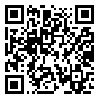BibTeX | RIS | EndNote | Medlars | ProCite | Reference Manager | RefWorks
Send citation to:
URL: http://jdm.tums.ac.ir/article-1-486-en.html
The aim of the present study was the histological evaluation of Enamel Matrix Derivative (EMD) effectiveness for regeneration of periodontal defects. EMD activates cementum synthesis, PDL and bone during the maturation stage of follicole. In this research, EMD was used in surgical defects of premolar teeth in four adult sheep. Muccoperiosteal flap was reflected in buccal site of teeth. The buccal bone plate was removed from mesial to distal in 4 mm depth. After eliminating the cementum by bur and its etching, EMD was applied on exposed dentine and flap was sutured. In opposite sites of those teeth (control sites) the same process was performed without etching. After 100 days, sheep were sacrificed and histological study through light microscopic was performed on black sections of operation sites. The results showed that in test sites, regeneration of cementum and bone was 62/5% and 42/5-50% respectively. But in control sites regeneration of cementum and bone was 37.5% and 32/5-42/5% respectively. Also the migration of junctional epithelium in control sites was 8-10% more than test sites. The important point is that in test sites, cementum was completely attached to undermining dentine. But, in control sites, the gap between cementum and dentine was visible. As a result, this study suggests that EMD promotes periodontal regeneration, and EMD application is a successful achievement in regenerative periodontal therapy.
| Rights and Permissions | |
 |
This work is licensed under a Creative Commons Attribution-NonCommercial 4.0 International License. |




